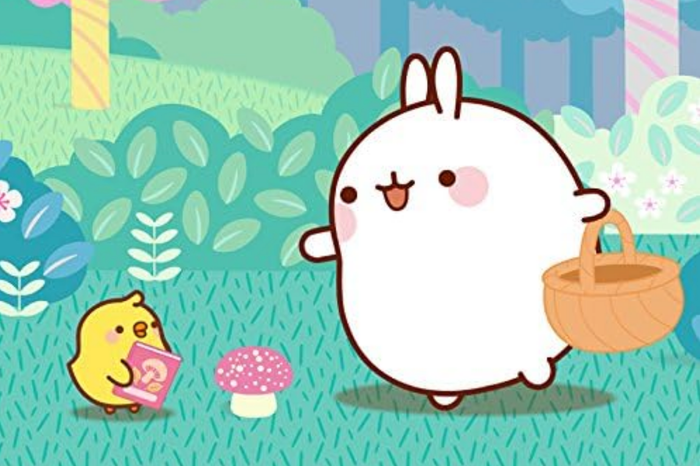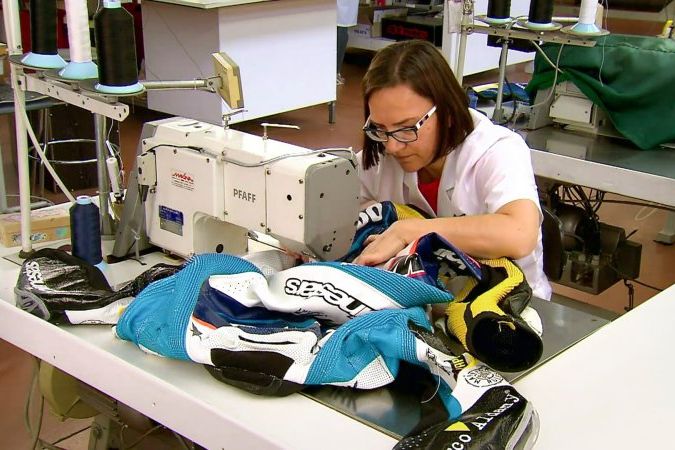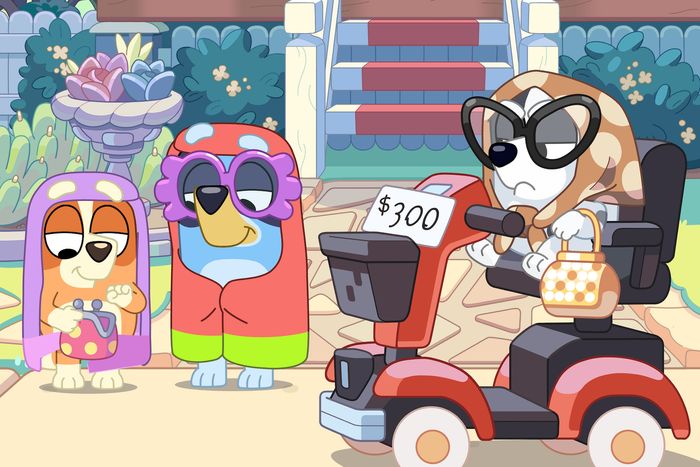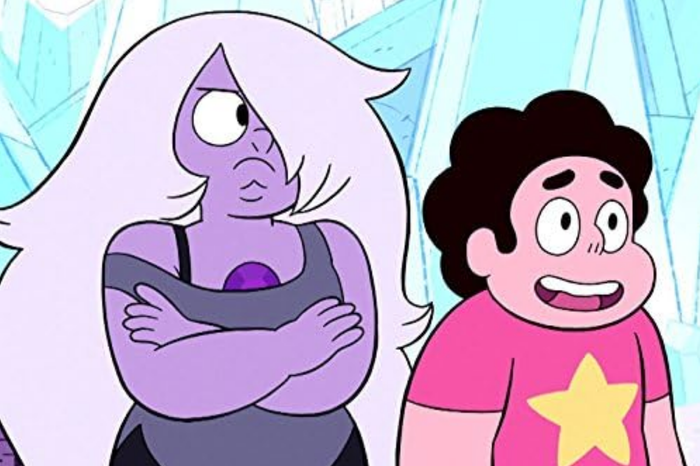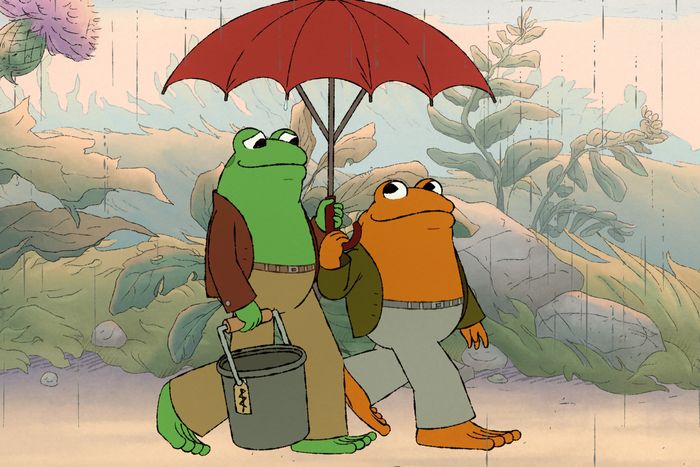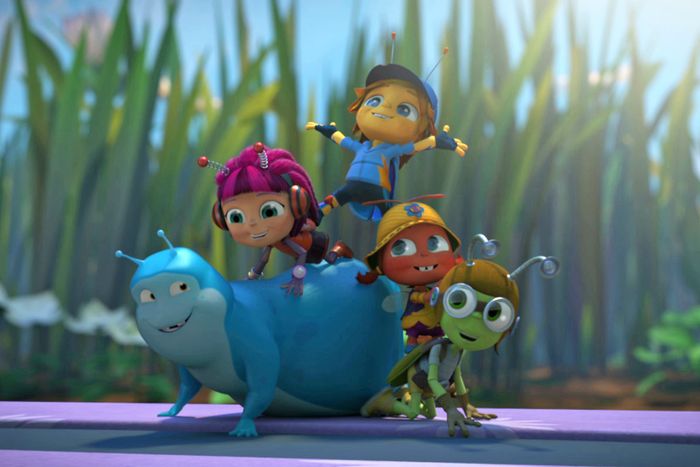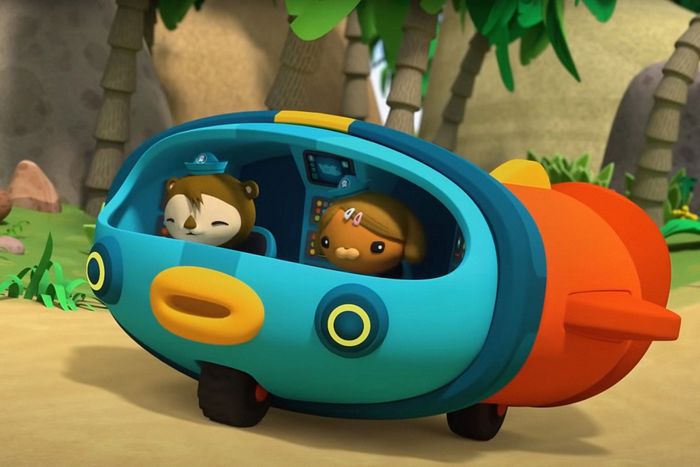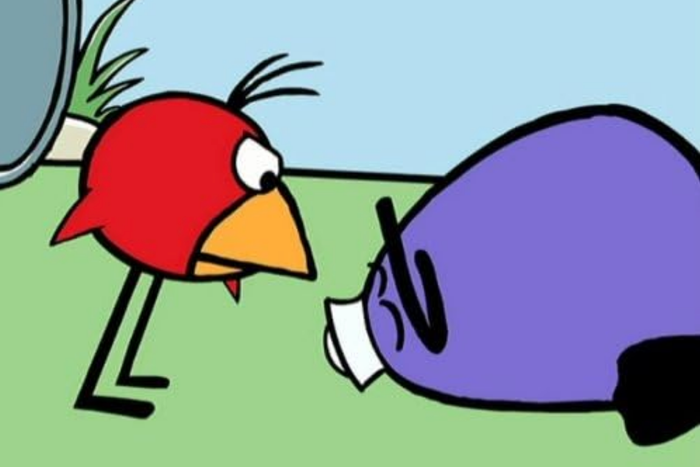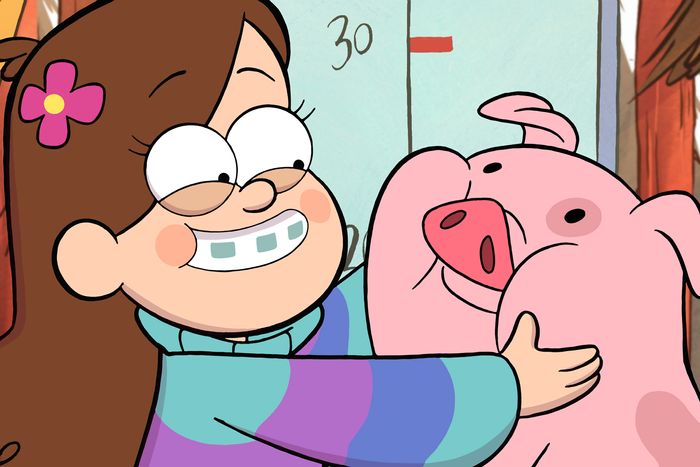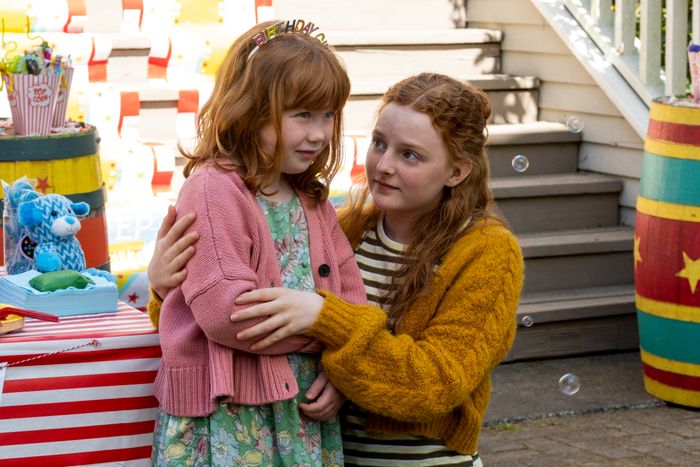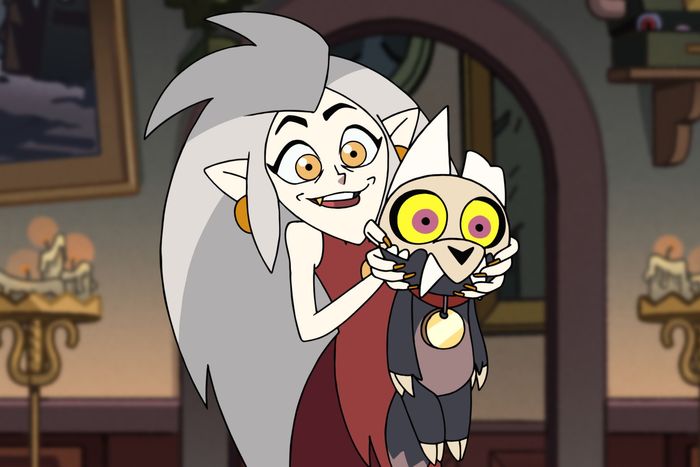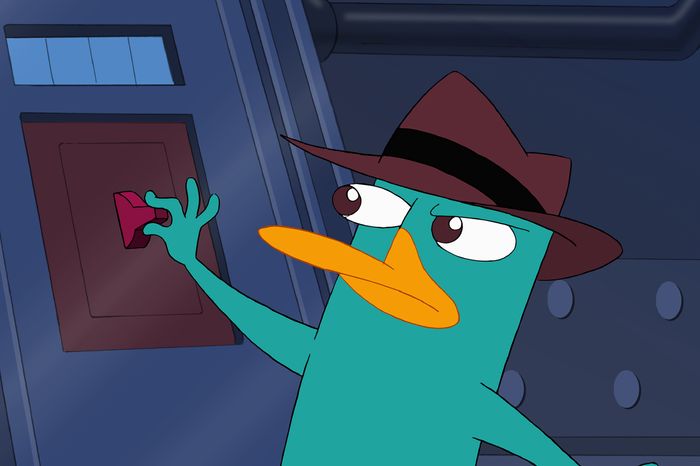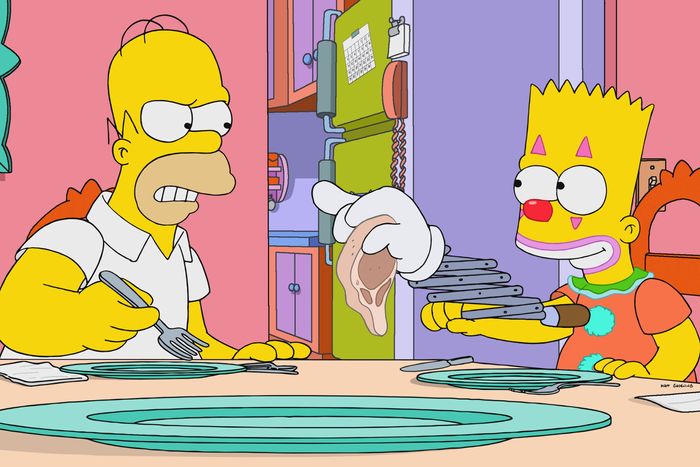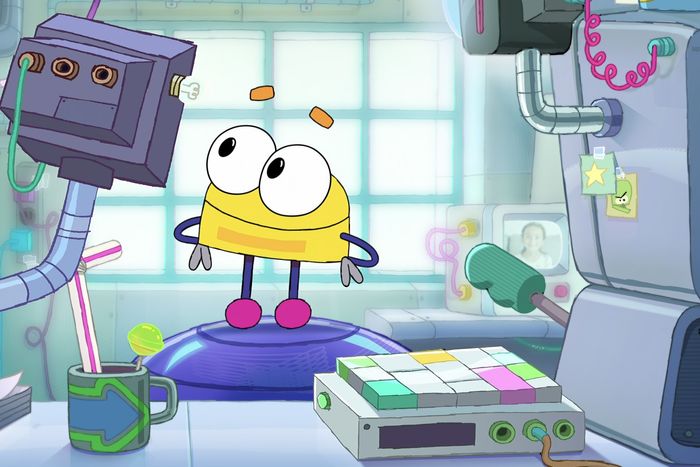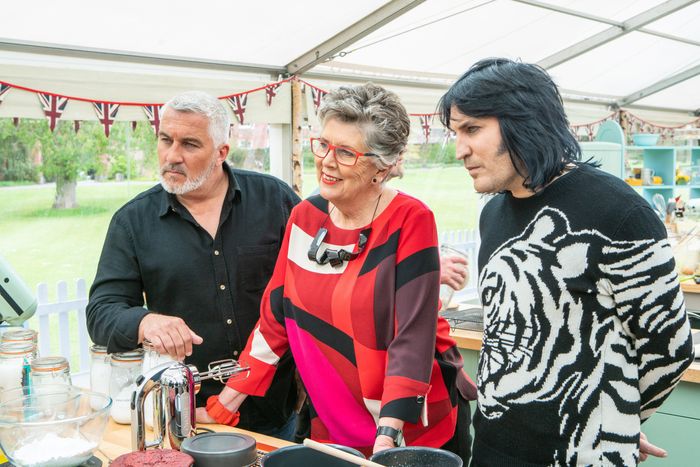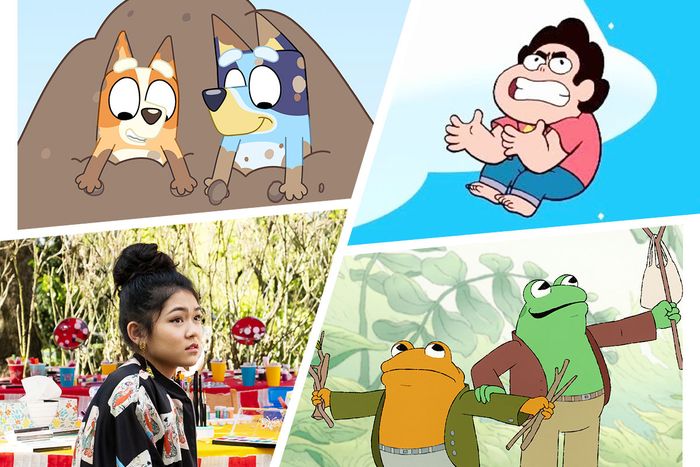
This story was originally published on December 18, 2019. It has been updated to include more shows just in time for those long, school-free days of summer.
Parents today have more control over what their children watch and enough options to do more than just filter out shows that are actively bad. What they still don’t have are the countless hours necessary to wade through the ocean of childrens’ programming for the few gems. And so we took it upon ourselves to try, applying the sensibilities of Vulture’s critics and contributors to find the best programming aimed at young children — mostly 3-to-7-year-olds, with a few notable shout-outs for older kids. Some of these shows are good enough that you might form a shared television interest, and, at the very least, we have your next long car trip covered.
Shows are listed by episode length.
Molang
Where to watch: Netflix, YouTube
Episode length: 2–5 minutes
“Big friend and little friend” is truly one of the best tropes. This animated series follows the pastel adventures of a bunny (Molang) and a yellow chick (Piu Piu). You’d be surprised at how much drama can be packed into the short stand-alone episodes and how satisfying it feels when the adorable duo successfully solves problems that range from having to bike over a huge hill to losing their map while sailing across the ocean.
Molang is a French show based on a Korean character, but don’t worry about language barriers — there’s no intelligible dialogue other than the main characters’ names. Does the gibberish teach children to use their imagination and practice reading body language and context clues? I can’t say for sure. But it does make for a cute, relaxing watch. The show’s like one of those sensory dancing-fruit videos, just with a bit more plot. Who could be mad at that? —Jennifer Zhan
How It’s Made
Where to watch: YouTube
Episode length: 4–5 minutes
This is a cheater’s recommendation; How It’s Made was originally a TV show, and it bears little resemblance to native YouTube content. For kids with an engineering bent, though, kids who long to understand how the pipes work in their homes and who mutter “Now we remove the excess” to themselves after carefully pressing Play-Doh into a mold, short segments from How It’s Made are catnip. Watching doughnuts be extruded onto conveyor belts, watching gloriously identical groups of sharpened pencils slide off the assembly line—it’s informative, sure, but it’s also incredibly soothing. How It’s Made and the wide world of similar YouTube clips are also an essentially endless resource. Breath mints, rubber bands, LEGOs, balloons, canned soup. You’ll never look at mundane consumer products the same way again. —Kathryn VanArendonk
Bluey
Where to watch: Disney+
Episode length: 7 minutes (with one notable exception)
It seems completely unnecessary at this point to have to argue for Bluey’s position as the dominant children’s show of our time, but there are still some people out there who don’t know it’s actually also a great show. Yes, it does seem almost unfair for something as wildly successful and enormously profitable as Bluey to be a legitimately fantastic work of TV. But Bluey is one of those rare, magic, generation-defining things that pop up every now and then, a show that speaks to lots of people (kids, parents, childless adults!) in lots of different ways and somehow manages to be beloved by nearly everyone. One thing to note, though: If you’ve got a very young toddler, say under the age of 3 or even 4, Bluey may not yet hit all the way. It moves quickly, and the combination of Australian accents and emotional themes works best for kids with a bit more language facility and imaginative flexibility. But fear not — Bluey will get them eventually. It comes for everyone. —K.V.A.
Steven Universe
Where to watch: Hulu, Max, Cartoon Network
Episode length: 11 minutes
I can’t help but think the geologically existential scene (come on, you know the one) in Everything Everywhere All at Once was influenced by Steven Universe — the story of a boy with serious mommy issues who also happens to be a magic rock. Steven Universe is a show about being a magic space rock, of course, of course, but it’s also frequently a tearjerker, a musical serial, an exploration of identity, a (found and biological) family drama, an action epic, and a laugh-out-loud comedy. At its heart, Steven Universe is a coming-of-age story: Steven is a boy whose life is defined by the untimely death of his alien mother in an intergalactic war, and now he’s caught between worlds, living a normal, hot-dog-loving existence on Earth while his guardians, the powerful Crystal Gems, battle monsters and their fellow corrupted Gems.
Created by former Adventure Time staffer Rebecca Sugar, who drew from the works of Hayao Miyazaki to conceive it, the show’s lessons are simple but never didactic. (“If every pork chop were perfect, we wouldn’t have hot dogs,” is one of its earliest memorable quotes.) The solution to basically every conflict in Steven Universe is a call for empathy — typically one character asking that another better understand their actions. And despite its soft aesthetics, usually rendered in pastels and floating bubbles, it never shies away from the heavy stuff. Steven’s mom is dead, her best friends are now raising him, and his all-too-human dad isn’t always the model parent. But he’s alive and free to love and grow and be. And that’s enough. —Eric Vilas-Boas
Frog and Toad
Where to watch: Apple TV+
Episode length: Two 11–13-minute segments per episode
What if you put Bert and Ernie in the Hundred Acre Wood? The Apple TV+ adaptation of Arnold Lobel’s beloved Frog and Toad book series feels like a mash-up of iconic children’s shows, and that familiarity is part of its appeal. Each episode rearranges an array of fairly static components: Frog (voiced by Nat Faxon) is friendly, like Ernie; Toad (voiced by Kevin Michael Richardson) is grumpy, like Bert; their friendship is unflappable, despite their differing personalities; and the cottagecore environment in which they live is populated by all kinds of forest friends, like Aparna Nancherla’s mail-delivering Snail, Selene Luna’s curious Robin, and Tom Kenny’s ice-cream-serving Mink. Of course, each episode features Frog cheering up Toad about something, Toad groaning and worrying, and their forest friends playing supporting roles in their adventures. That’s all to be expected. But what feels so lovely is how the series incorporates its episodes’ lessons with grace, charm, and sweetness — like Frog and Toad learning self-control by sharing their fresh-baked cookies with their neighbors, and Toad finding his lost button by identifying the shapes and colors of other buttons his friends find for him. The series sidesteps how Frog and Toad (again, like Bert and Ernie) have become queer icons, but their best-friendship is enchanting, populated by shared meals, thoughtful gifts, and all the kinds of deliberate gestures kids can learn from. Also, Toad having a dedicated “sad time of day” is just relatable. — Roxana Hadadi
Beat Bugs
Where to watch: Netflix
Episode length: 14–24 minutes
A cast of animated insects in an overgrown suburban lawn embark on adventures retrofitted to the lyrics of Beatles songs. In the tradition of 21st-century animation, the numbers are reinterpreted by celebrity musicians: Sia does “Blackbird,” Eddie Vedder does “The Magical Mystery Tour.”
Like its adult-jukebox forebears, Beat Bugs is a plotty but not particularly coherent show; the pleasure for grown-ups often lies in watching the acrobatics required to justify a narrative journey as absurd as “Sgt. Pepper’s Lonely Hearts Club Band.” Still, the bugs are adorable, the visual jokes are clever (humans are bumbling “gigants,” the bug zapper a mystical threat), and the lessons are sweet.
Creator Josh Wakely’s second jukebox show, Motown Magic, taps Sony’s thousands of Motown cuts to tell the story of an 8-year-old in inner-city Detroit who enters magical worlds through wall graffiti. It’s a touch less inventive than Beat Bugs, but wholesome and also maybe the most inclusive children’s show since Sesame Street. —Boris Kachka
Octonauts
Where to watch: Netflix
Episode length: Two 12-minute segments per episode
Octonauts is explicitly educational. Captain Barnacles (a bear) and his team of underwater explorers complete missions to help unusual sea creatures, and each segment features some idiosyncratic aquatic animal. Your children will know all the details about yellow-bellied sea snakes that you barely skimmed on the last trip to the aquarium.
Where Octonauts wins out over all the watch-alike animal-adventure shows, though, is its charming imagery and its heart-first emotional buy-in. Barnacles is the leader, Kwazii is the reckless humorist, and the Vegimals are peanut gallery, but the real heart of the show belongs to Peso the Penguin, the show’s sweet medical tech. He’s so anxious for the humpback whale with no family. He’s so overjoyed when an animal is healed. Problems are surmountable, as they always are, but Octonauts gives kids enough credit to let those problems feel real before fixing them. Plus, and this is no small thing: Its closing musical number absolutely slaps. —K.V.A.
Peep and the Big Wide World
Where to watch: Amazon Prime
Episode length: Two 12-minute segments per episode
What Daniel Tiger’s Neighborhood is to social-emotional learning, Peep and the Great Wide World is to ecology. Peep, a good-natured chick, and Quack, a grumpy duck, as well as other onomatopoeically named friends, overcome gentle obstacles induced in part by their general failure to understand the natural world (a real deficit if you’re a bunch of birds). In one, they find a tasty-looking piece of bread that they save for later, only to discover when they return that it’s moldy, which is bad for them but good for their ant friends. But where Daniel Tiger is a visual and auditory irritant, Peep’s world is delightfully quirky and genuinely funny, in no small part because Joan Cusak provides voice-over commentary. The visual style is graphic and minimal — legs are sticks, bodies are basically balls — and Quack’s curmudgeonly disposition provides just the right amount of vinegar, which may be why, long after my daughter has moved out of the neighborhood of make-believe, she’s still entertained by Peep. —Genevieve Smith
Shaun the Sheep
Where to watch: Amazon Prime
Episode length: 20 minutes
The Venn diagram of shows that will appeal to both toddlers and grade-school elementary kids is very, very small. The number of shows that can do those things and also be legitimately endearing for parents? Essentially nil. The one exception I’ve found is a show called Shaun the Sheep, an animated series from the same company that made the Wallace and Gromit and Chicken Run.
For toddlers, Shaun the Sheep works because of its simplicity and brevity. Stories are only five to seven minutes each (Amazon Prime collects them into 20-minute episodes), and because the show is nearly wordless, the narrative plays out in big, silly, visual ways. For older kids, Shaun is a font of humor, often playing on small-scale dramatic ironies and big broad payoffs — there’s a lot of generous slapstick, and the stakes stay pretty low. The thing I can’t get over is how well Shaun works for me, too. Some of it is the animation style, a witty claymation aesthetic that feels artful, textural, and personal. But most of it is just how sly it all feels, without ever sliding into being patronizing or mean. I hope my kids want to watch it forever. So far, so good. —K.V.A.
Gravity Falls
Where to watch: Disney+
Episode length: 20–24 minutes
Does any other show on this list genuflect as hard at the altar of Twin Peaks? Your kids will miss the references, but this eerie mystery show set in a Pacific Northwest town beset by supernatural phenomena makes direct nods to the Red Room, numerous owls, and even Bob, that show’s Big Bad, through the cartoon villain Bill Cipher (who was at one point intended to be voiced by David Lynch). Just like the town of Twin Peaks, Gravity Falls is a woodsy tourist destination populated by oddballs with sometimes paranormal secrets. The role of its heroes — a boy named Dipper; his twin sister, Mabel; and their eccentric Grunkle Stan — is to prevent the demonic Bill from bringing about the apocalyptic Weirdmageddon.
If the show were just a cleverly referential fantasy, that would probably be enough. But like Twin Peaks, Gravity Falls’s true delight is in how it teases out the relationships between the three leads and the supporting players they meet along the way. We love characters like Soos, Wendy, and Ford less because of how their actions affect the show’s circuitous mysteries than because of how charismatically human they are — crisply animated with likes, dislikes, boy troubles, and familial dysfunctions. If you give this one a shot, avoid the show’s detailed Wiki pages to skip spoilers not just for the apocalypse but for how the characters’ relationships to one another change. —E.V.B.
The Baby-Sitters Club
Where to watch: Netflix
Episode length: 22–27 minutes
Although tragically canceled after only two seasons, Netflix’s Baby-Sitters Club adaptation is exactly the kind of show every 7-to-11-year-old kid needs, something to slot in between little kids’ animated programming and the family-sitcom obsession that likely follows. (Or let’s be honest, YouTube and TikTok). It does fit into the grand tradition of “first period” programming, a valuable genre that each generation deserves to have freshly remade for it, but that episode also contains every lovely thing the Baby-Sitters Club series was at its best. There are stories about friendship, aging family members, rivalries, and crushes, and there’s a deep well of love and empathy for older kids who aren’t quite teens yet, with all the promise and enthusiasm and anxiety about growing up that comes with that stage. Every second is delightful. —K.V.A.
The Owl House
Where to watch: Disney+
Episode length: 22 minutes (seasons one and two), 46–55 minutes (season three)
Dana Terrace’s proudly gay, Peabody-winning animated series notched a string of important (though long overdue) milestones in its brief three-season run: It was the first Disney title to put a same-sex couple in leading roles, the first to feature a same-sex kiss between main characters, the first to feature same-sex parents, and the first to feature nonbinary characters. It was also canceled by Disney before its time (bad for the “brand,” according to one unnamed executive’s tastes, said Terrace in an AMA), but that doesn’t mean it’s not worth a watch. In fact, the supernatural comedy is a revelation of fantasy storytelling — often vibrantly animated and sophisticated in its serialized narratives.
The Owl House begins when 14-year-old Luz Noceda falls into the magical world of the Boiling Isles. There, she meets an anarchic witch who lives in the show’s titular domicile, where Luz trains to become a witch herself to embark on adventures in the Boiling Isles and the rest of the Demon Realm. A word of caution for parents: The show starts out a bit trippy and dark before softening its tone (and getting more Disney) as it goes along. It’s worth watching an episode or two ahead of time if you’re unsure of exposing your big kids to its (we stress: mostly tame!) horror aesthetics. —E.V.B.
Phineas and Ferb
Where to watch: Disney+
Episode length: 23 minutes
Eddie Rice (age 8): I can’t remember how I first learned about Phineas and Ferb. Maybe one of my friends showed it to me. But I love Phineas. He never stops talking. Yes, okay, fine — he’s sort of like me. Phineas is really cool, and I can’t believe how he manages to find all the material for his inventions. Like, you never see him buying it. Ferb doesn’t say much, but he also helps. They create inventions that should take a year, and it takes, like, only one day. Phineas and Ferb also have a pet platypus named Perry. He is actually a secret agent, flies around with a jet pack, and has a secret lab underneath their house. Perry is always fighting against his archenemy, Doctor Doofenshmirtz.
Andrew Rice (dad): The genius of the show is that the evil scientist is its moral center. Dr. Doofenshmirtz is a broad, Mel Brooks–style parody, with a comically bad German accent, and he is continually building silly contraptions with names like the “Melt-inator” and the “Poop-inator.” (After a while, the show starts referring to all his contraptions, generically, as “inators.”) But the running joke is that he is incompetent not just at science but at being evil. He often foils himself through decent acts and is insecure about his thwarted career ambitions. Doofenshmirtz, a divorced dad, longs to win the respect and affection of his too-cool teenage daughter, Vanessa, who is embarrassed by his efforts at world domination. Actually, he’s not even trying to dominate the world, just the “tristate area.”
Eddie: He’s not evil. He’s just had a tragic life.
The Simpsons
Where to watch: Disney+
Episode length: 23 minutes
I studied The Simpsons in high school like it was a religious text. The mix of high and low, the dense layering, informed my own sense of humor. My son’s indoctrination began when he was 6, with the episode in season eight when Lisa tries to babysit Bart. Admittedly, he was too young for most of it. The B-plot about Springfield’s new outdoor mall for yuppies was lost on him, except for the part where Homer accidentally wanders into the fountain. But he loved when Rod and Todd Flanders were afraid of the moth and when Ralph Wiggum put his pants on his arms and said, “I dress myself!” (Both scenes I think about regularly, now that I’m a mom who has to fend off bug attacks and explain how pants work.) And he got emotionally invested in the plot, cheering for Bart but feeling for Lisa. Maybe it’s a little self-involved to try to make him love the things I love. But watching my son take pleasure in watching this thing that has given me so much pleasure was, in the recursive loop that is parenting, a pleasure in itself. —Izzy Grinspan
StoryBots
Where to watch: Netflix
Episode length: 25–30 minutes
In each episode of this Netflix series, the titular cartoon guide-bots answer a question posed by a real kid. Live action and cartoons are intercut with joyously non sequitur song breaks, and each episode features a guest star like Snoop Dogg or Tony Hale. My favorite one is “How do people catch a cold?” The bots start out in a doctor’s office — the doctor is played by Wanda Sykes — then journey inside a human body where they encounter a friendly macrophage. The macrophage eats the virus, creating antigens that kick-start T-cells, which then activate B-cells to help white blood cells attack the cold virus. (Spoiler alert: If a virus gets inside your body, that’s how you catch a cold.) “Your body can defend itself / Your suffering will end with help / From an army / Of white blood cells in your body,” goes part of the oddly catchy song that concludes the episode.
Be honest: Did you know all of that? Pre-Storybots, I probably could have gotten “white blood cells” and “viruses” but definitely not all the other details. The other episodes are like that too: educational in a way that’s specific enough to be interesting no matter how old you are, unlike shows that are only interesting if you’re new to concepts like “letters” or “Grown-ups always come back.” I think the “How do airplanes fly?” episode might have taught me … rudimentary physics? —Emily Gould
The Great British Baking Show
Where to watch: Netflix
Episode length: 52–67 minutes
I started watching The Great British Baking Show soon after having a baby, when my brain felt too broken for anything higher stakes. There is little mention of winners or losers on the show, no monetary prize at the end, no cruelty. The judges are gentle with their criticism and sentimental with their praise; the contestants support each other. Everyone seems to cry at some point, but they are crying about a fallen cake or because their pie has a, God forbid, soggy bottom.
My son was 3 or 4 when he first sat down next to me while I was trying to covertly watch it. I remember not wanting to turn it off, then thinking, Hey! This show is wholesome. It’s about creative passion and self-belief! Focus and persistence. There’s nothing inappropriate. Maybe he can just watch it with me for as long as he will pay attention. And then: Wouldn’t it be nice if he grew up to be a baker? He could create tangible things and bring us croissants when he visits. Now invested in his interest, I started adding some of my own narration, for clarity and increased suspense. Like attention-span training wheels, I introduced the more rudely American concept of winning and losing into the show and tried to build excitement when the bakers’ time was running out. It took some training, but now that my son is 5, we are both all in. “Mom, want to watch the baking show?,” he says with big eyes, like it’s our special thing, and I think, Thank God, I really do. —Meaghan O’Connell
*A version of this article appears in the December 23, 2019, issue of New York Magazine. Subscribe Now!


